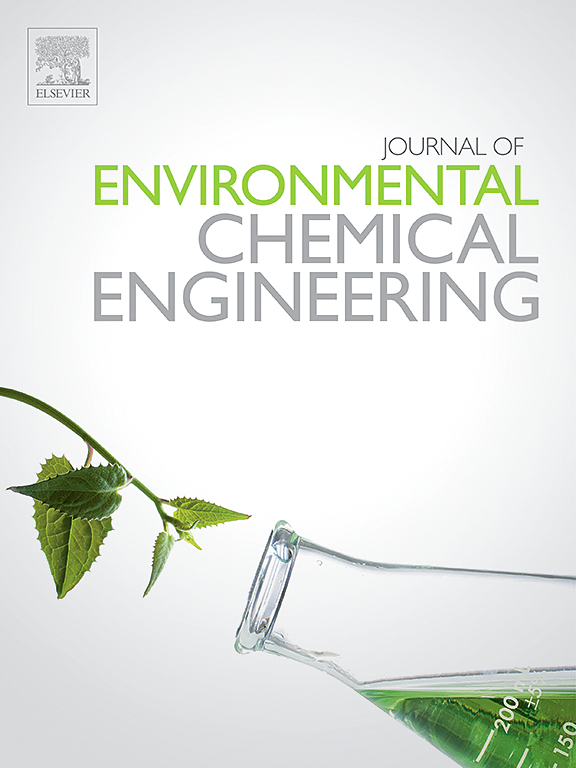Functionalization of polymers and nanomaterials for H2/CO2 separation membrane: State-of-the-art, challenges and perspectives
IF 7.4
2区 工程技术
Q1 ENGINEERING, CHEMICAL
引用次数: 0
Abstract
Membrane technology provides unique advantages in separating hydrogen from various mixture streams in commercial settings owing to its energy efficiency and small footprints. Conventional polymer membranes have low permeability and selectivity in H2/CO2 separation, which limits their commercial application. Mixed matrix membranes (MMMs) which combine the advantages of conventional polymeric materials and inorganic nanomaterials offer tremendous opportunities to surmount the shortcomings and unsatisfactory performances of the polymeric and inorganic counterparts. While delivering attractive features to improve the permeability, selectivity, and durability of the membranes, the insufficient performance improvement of MMMs is closely associated with some bottlenecks, particularly the presence of interface defects caused by poor dispersion and incompatibility with the polymer. Various functionalization strategies have been explored to address these issues. In this review, a comprehensive overview of the functionalization strategies of polymeric membranes and MMMs for hydrogen separation, including their advantages and limitations, the classification of functionalization and the effects of functionalization on performance is presented. The current technical challenges are highlighted and the insights into future research directions are discussed. The progress made in membrane functionalization not only addresses the current limitations but also paves the way for a sustainable and efficient hydrogen economy.
聚合物和纳米材料用于H2/CO2分离膜的功能化:最新进展、挑战和前景
膜技术由于其能源效率和占地面积小,在商业环境中从各种混合物流中分离氢气方面具有独特的优势。传统聚合物膜在H2/CO2分离中的渗透性和选择性较低,限制了其工业应用。混合基膜(MMMs)结合了传统高分子材料和无机纳米材料的优点,为克服高分子材料和无机纳米材料的缺点和不尽如人意的性能提供了巨大的机会。虽然具有提高膜的渗透性、选择性和耐久性的吸引力,但MMMs的性能改善不足与一些瓶颈密切相关,特别是由于分散不良和与聚合物不相容而导致的界面缺陷的存在。已经探索了各种功能化策略来解决这些问题。本文综述了用于氢分离的聚合物膜和MMMs的功能化策略,包括它们的优点和局限性,功能化的分类以及功能化对性能的影响。强调了当前的技术挑战,并对未来的研究方向进行了讨论。膜功能化的进展不仅解决了目前的限制,而且为可持续和高效的氢经济铺平了道路。
本文章由计算机程序翻译,如有差异,请以英文原文为准。
求助全文
约1分钟内获得全文
求助全文
来源期刊

Journal of Environmental Chemical Engineering
Environmental Science-Pollution
CiteScore
11.40
自引率
6.50%
发文量
2017
审稿时长
27 days
期刊介绍:
The Journal of Environmental Chemical Engineering (JECE) serves as a platform for the dissemination of original and innovative research focusing on the advancement of environmentally-friendly, sustainable technologies. JECE emphasizes the transition towards a carbon-neutral circular economy and a self-sufficient bio-based economy. Topics covered include soil, water, wastewater, and air decontamination; pollution monitoring, prevention, and control; advanced analytics, sensors, impact and risk assessment methodologies in environmental chemical engineering; resource recovery (water, nutrients, materials, energy); industrial ecology; valorization of waste streams; waste management (including e-waste); climate-water-energy-food nexus; novel materials for environmental, chemical, and energy applications; sustainability and environmental safety; water digitalization, water data science, and machine learning; process integration and intensification; recent developments in green chemistry for synthesis, catalysis, and energy; and original research on contaminants of emerging concern, persistent chemicals, and priority substances, including microplastics, nanoplastics, nanomaterials, micropollutants, antimicrobial resistance genes, and emerging pathogens (viruses, bacteria, parasites) of environmental significance.
 求助内容:
求助内容: 应助结果提醒方式:
应助结果提醒方式:


